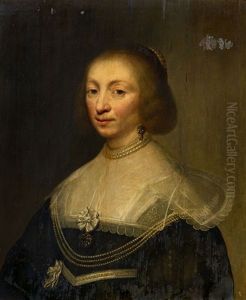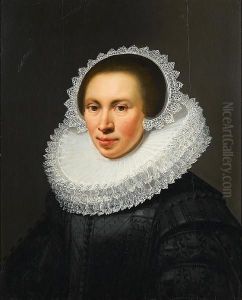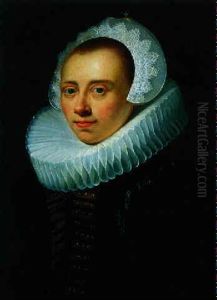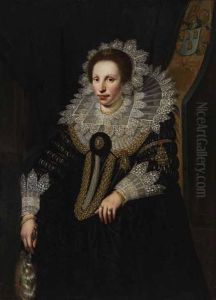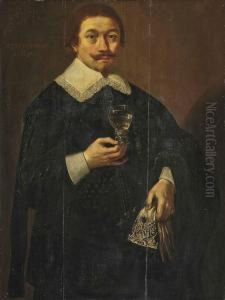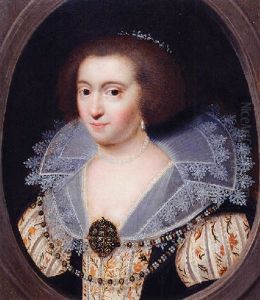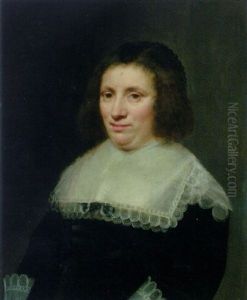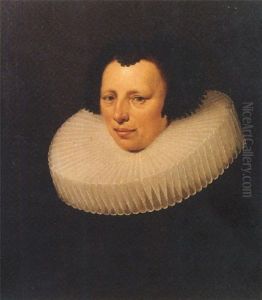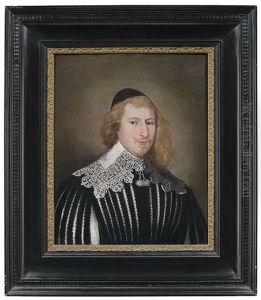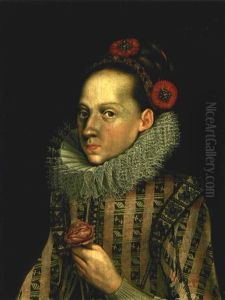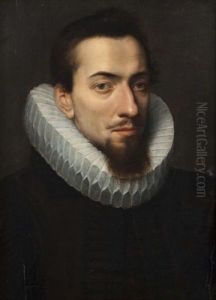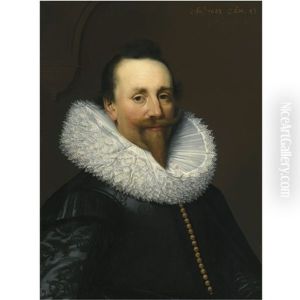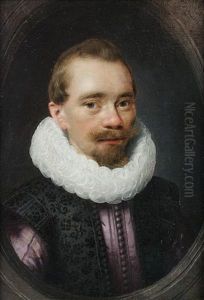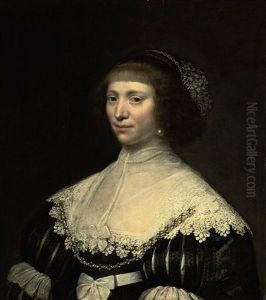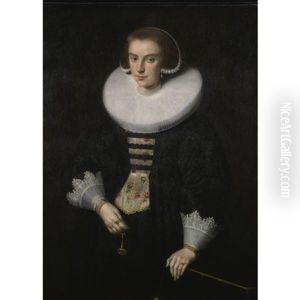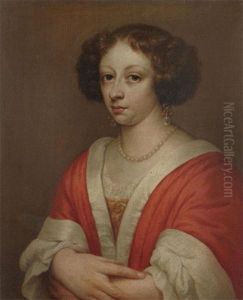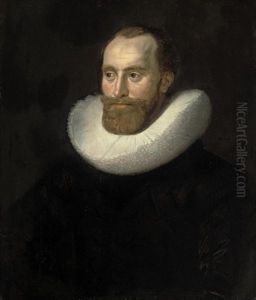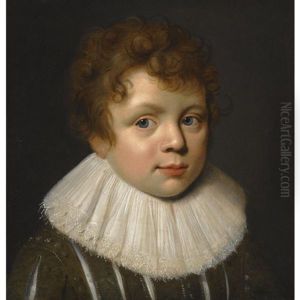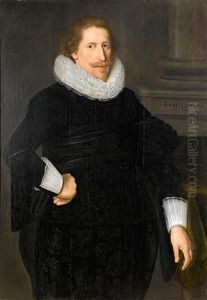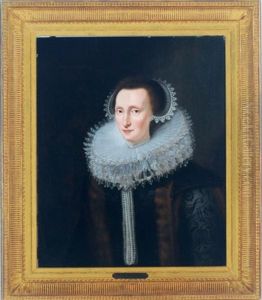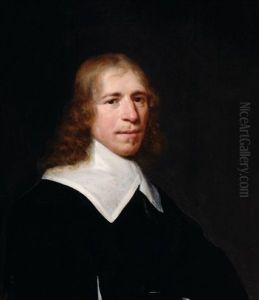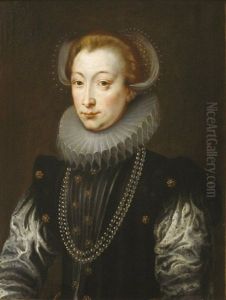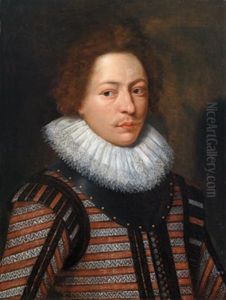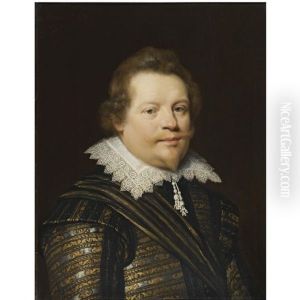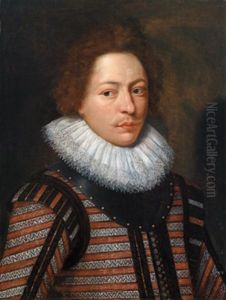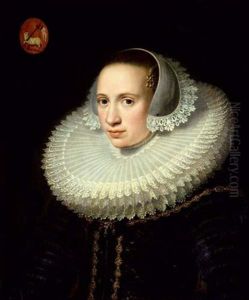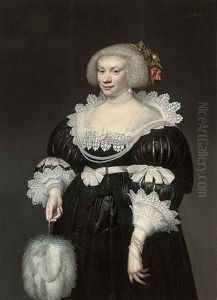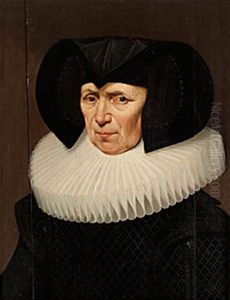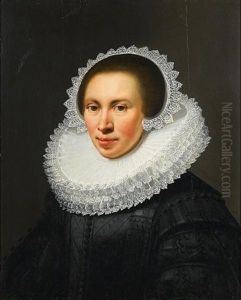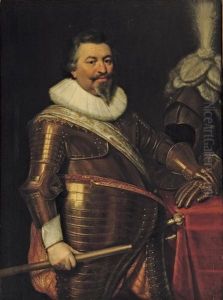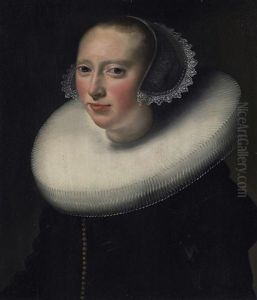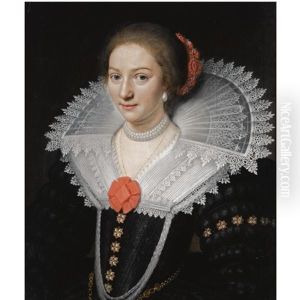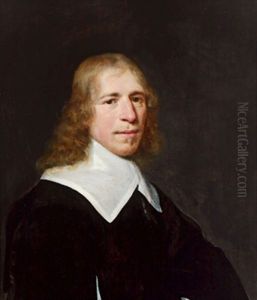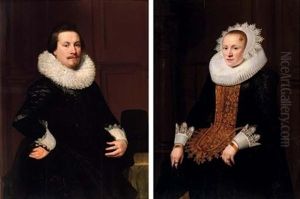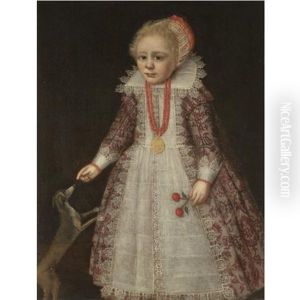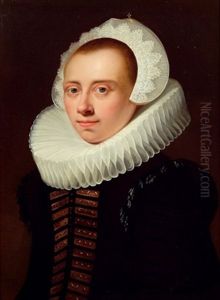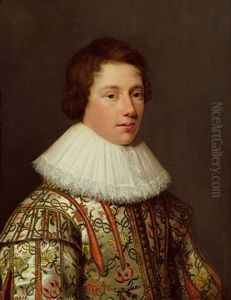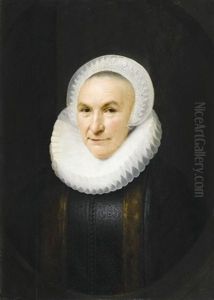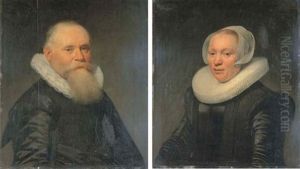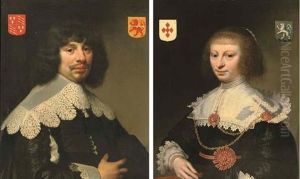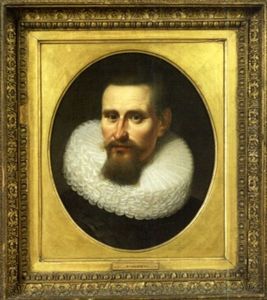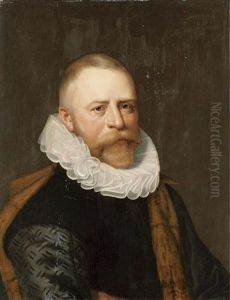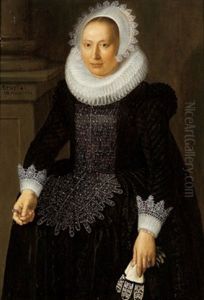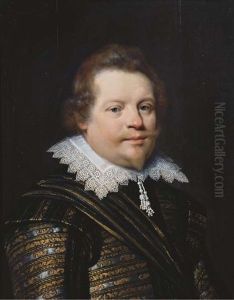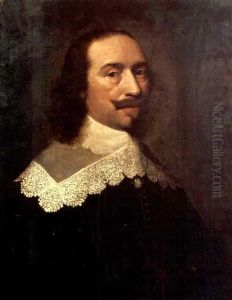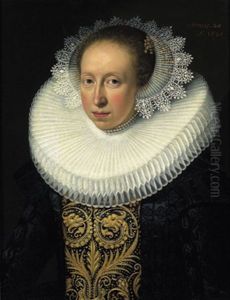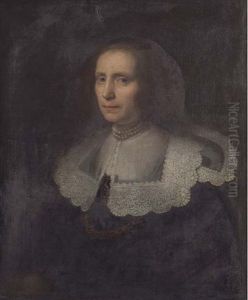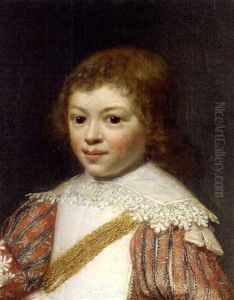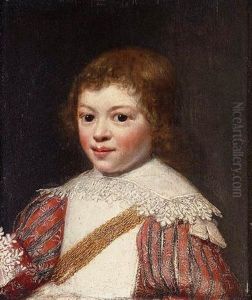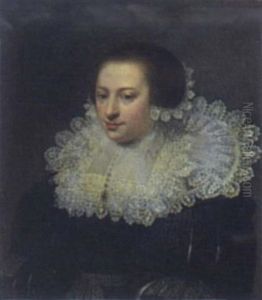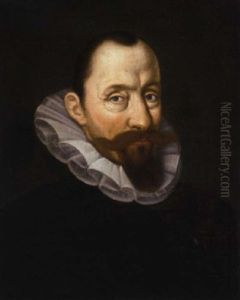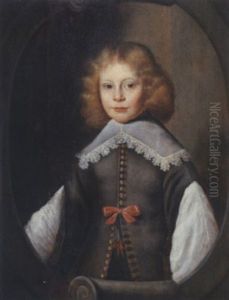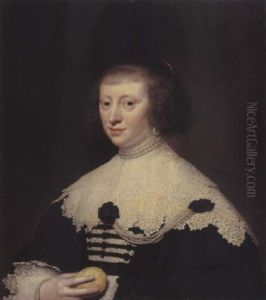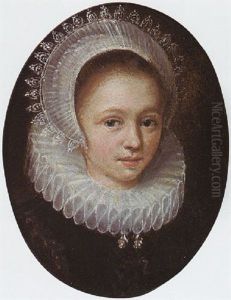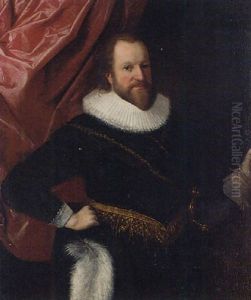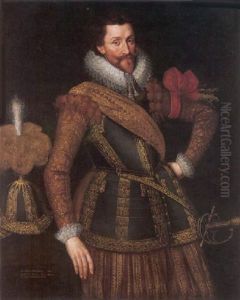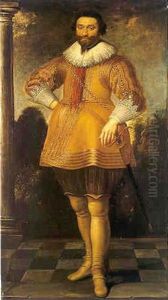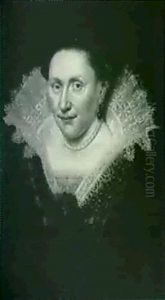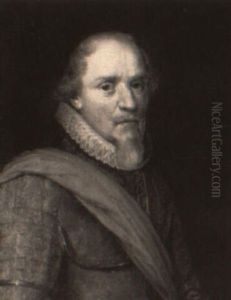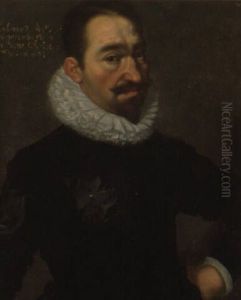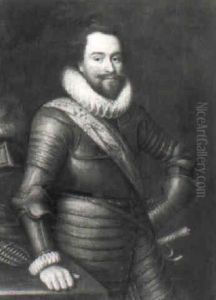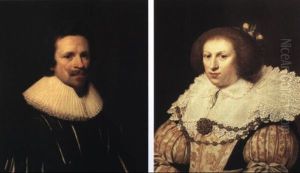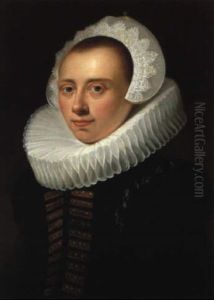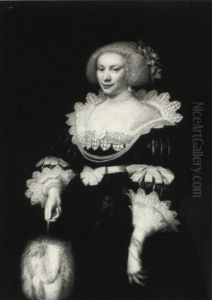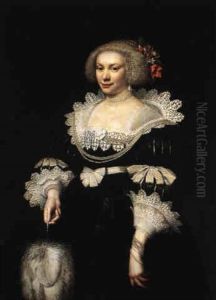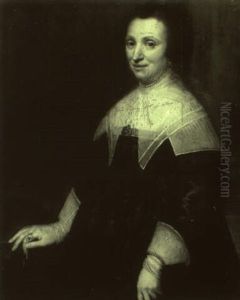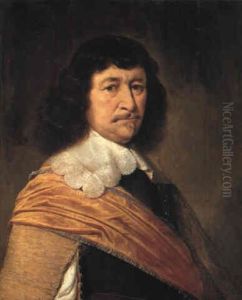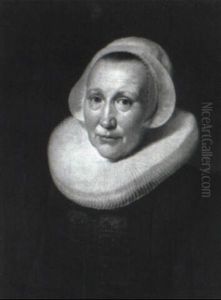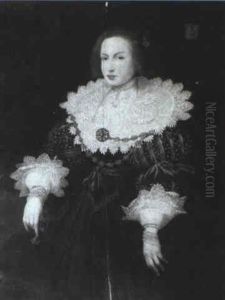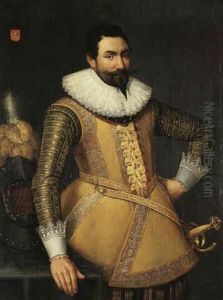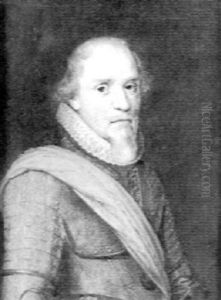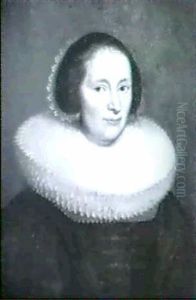Jan Anthonisz Van Ravesteyn Paintings
Jan Anthonisz van Ravesteyn was a Dutch portrait painter who was active in The Hague during the late 16th and early 17th centuries. Born in The Hague in 1572, he became one of the leading portraitists in the city and was noted for his refined depiction of the local and visiting aristocracy. His work is often characterized by its intricate detail, elegant attire of the sitters, and the use of cool color palettes.
Not much is known about van Ravesteyn's early life and training. It is speculated that he may have been a student of the painter Anthonie van Montfoort. By 1598, van Ravesteyn had become a member of The Hague's painters' guild, and he gradually established himself as a portraitist for the court of the House of Orange and the nobility. His clientele included Prince Maurice of Nassau and other members of the court, and he was known to collaborate with other artists of the time, including Michiel Jansz van Mierevelt.
Van Ravesteyn's portraits are particularly notable for their detailed rendering of fine fabrics and lace, which was a prominent aspect of the fashion of his time, and for the dignified representation of his subjects. His style evolved over his career, initially showing influence from Flemish mannerism but later adopting the more sober and realistic approach that was characteristic of Dutch portraiture in the 17th century.
The artist's contributions to Dutch portrait painting were significant, especially in the development of group portraiture. He was among the artists who paved the way for the later achievements of Dutch Golden Age painters. Van Ravesteyn continued to paint until his later years, with works dated up to the 1640s, and he left behind a substantial body of work that provides a valuable glimpse into the society and fashion of his time.
Jan Anthonisz van Ravesteyn died in 1657 in The Hague. Today, his works are held in numerous collections around the world, including the Mauritshuis in The Hague, the Rijksmuseum in Amsterdam, and the National Gallery in London. His legacy endures as an important figure in the Dutch tradition of portraiture, offering insights into the cultural and historical context of the Dutch Republic.
